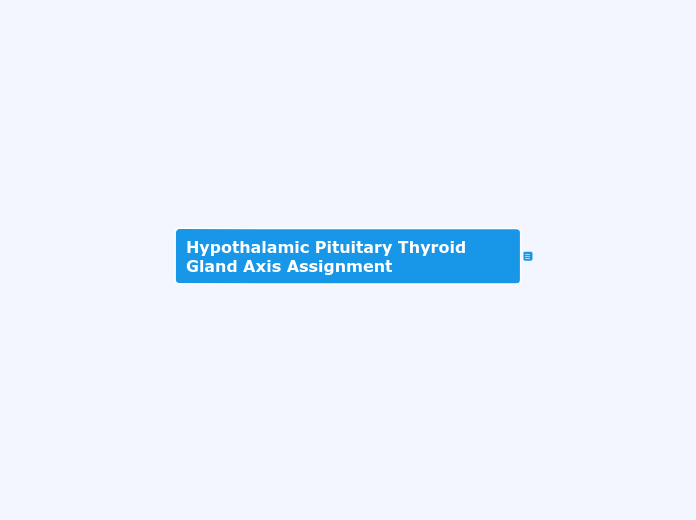5
4
3
2
1
body temperature
when high
Sensor: thermoreceptors signal an increase in temperature
Integrator
Hypothalamus turns on cooling systems
Effector: Skin blood vessels dilate; increased blood flow to skin; thermal energy loss from skin
Result
Body temperature decreases; hypothalamus turns off cooling systems
Effector: sweat glands initiate sweating; evaporation of swear causes cooling
Endocrine system
Such as
decrease in fat
Lowering of voice
increase in muscle
Producess
Testosterone
Sperm cells
Puberty, LH
Inhibits production of FSH
Hypothalamus
Inhibin
Male development
Puberty,
FSH
Secondary sex characteristics
widening of the hips
growth of body hair
increase in body fat
breast development
Inhibits FSH production
Increases LH production,
Thickening of uterus
Many cells
Uterus, hypothalamus
Estrogen
Inhibits LH production
Preventing development of other follicles
Progesterone hormone
Contain
Group of cells
Called
develop
during each cycle
only one reaches maturity
at puberty
400000
Granulosa cells
Primary oocyte
Contributes to
female development
Adrenal Glands
Adrenal medulla
glycogen break down
dilation of pupils
blood flow
heart
breathing rate
HR
lungs
Blood vessels
Heart
Noradrenaline
Adrenaline
Adrenal cortex
Aldosterone
Increasing Na absorptio
in both
higher blood pressure
colon
Colon
Cortisol
include
decreasing
permeability of capillaries
affected tissues
Break down of muscle and fat
to increase
available energy
Target Tissues
Capillaries
Adipose tissue
Muscles
Thymus gland
Maturing T cells
Immune system
Thymosin
the
Body feedback
when
T cells are needed
Includes the
Pineal Gland
Making you sleepy
only if
in the dark
lack of it
making you awake (in light)
Brain
Melatonin
darkness
Circadian rhythm
Pancreas
High glucose levels
Uptake of glucose
to be
stored as glycogen
Target Tissue
Liver and muscle cells
Low glucose levels
Effects
release of glucose
Breakdown of glycogen
includes the
Hypothalamus gland
Pituitary gland
Nervous system
Release inhibiting hormones
Stops the release
of
anterior pituitary hormones
Releasing hormones
Release of anterior pituitary hormones
neurohormones
Made by
neurons
Regulates
Pituitary gland activities
neurosecretory cells
feedback loop
maintain homeostasis
blood glucose levels
if low
Removal of excess glucose from blood
Low blood glucose level
Alpha cells of pancreas stimulated to release glucagon into the blood
Glucagon
Liver breaks down glycogen and releases glucose to the blood
Blood glucose level rises to set point; stimulus for glucagon release diminishes
if high
Stimulus is
Rising blood glucose level
Beta cells of pancreas stimulated to release insulin into the blood
Insulin
Body cells take up more glucose
Blood glucose level declines to a set point; stimulus for insulin release diminishes
Liver takes up glucose and stores it as glycogen
disorders
Diabetes
Insulin injections
should be balanced
with
meals
doesn't prevent
serious complications
blindness
stroke
useful for
Monitor blood sugar
regulating blood sugar
has
3 types
Gestational diabetes
occurs in
2-4% of pregnancies
Temporary condition
Type 2 diabetes
Non-Insulin dependent
Controlled with
sulfonamide drugs
stimulate
islets of langerhans
exercise
diet
Decreased
insulin production
or
ineffective use of insulin
adulthood
Type 1 diabetes
Insulin dependent
Unable to
produce insulin
Diagnosed in
childhood
Early degeneration of beta cells
Increase HGH
Acromegaly
thickness of bones
feet
hands
face
Young
Gigantism
results in
growth of long bones
Decrease HGH
happens
When old
HGH naturally decrease
decrease protein synthesis
maybe the reason
decreasing muscle mass
When young
late or no puberty
leads
pituitary dwarfism
being
small
normal proportion
Vitamin D deficiency
takes place
Adult
Osteomalacia
Soft bones
Infant
causing
Rickets
Impairs normal growth
increase Fractures
Skeletal deformities
Hypothyroidism
is using
thyroxine supplements
for example
Decrease in
HR and output
Increase weight gain
but
unable to make thyroxine
thyroid is stimulated
divide/grow
can cause
goiter
iodine deficiency
Decrease
Hyperthyroidism
Treatment
radioactive iodine
to
destroy affected tissue
thyroid blocking drugs
remove thyroid
including
bulging eyes
increase in
sweating
heat
appetite
weight loss
BMR
muscle weakness
Autoimmune disorder
attacks
TSH receptors on thyroid cells
making them
permanently on
leading
produce thyroxine
thyroid cells to continuously divide
increases
thyroxine
Addison disease
Loss of appetite
Weight loss
Low blood pressure
adrenocortical insufficiency
dysfunction of the entire adrenal cortex
hypoadrenocorticism
Cushing’s syndrome
Symptoms
Fluid retention
Muscle weakness
High blood glucose
High blood pressure
a hormonal disorder
caused by
prolonged exposure of the body’s tissue to high levels of cortisol.
known as
hypercortisolism
if it isn't healthy
lack energy
due to
too much sugar staying in the blood
instead of
moving into your cells
where
needed for energy
weak bones
gaining weight easily
problems
managing stress
getting pregnant
developing during puberty
Functions
Control the process of sexual reproduction
nourishment of the newborn
fetal growth and development
fertilization
gametogenesis
Regulation of growth and development
maintaining homeostasis
an interaction between
both
nervous system
endocrine system
Monitors
Consists of
several organs
glands
Create & secrete
Are
chemicals
have
two types
Protein hormones
Growth factors
Consist of
amino acids chains
length ranges
3 a.a to more than 200 a.a
receptors on cell surface
Hydrophilic
meaning
water soluble
cannot enter plasma membrane of target cells
Not lipid soluble
Steroid hormones
Example
sex hormones
Bind to
receptors inside target cell
made from
cholesterol
Hydrophobic
can
pass through lipid bilayer
is not
soluble in blood
thus
combine with a hydrophilic protein carrier
to move
through the blood
Lipid soluble
controlled by
Antagonistic hormones
opposing actions
Feedback loops
usually
negative
Released into the blood
affect
cells in another part of the body.
coordinates
different functions in the body
by
carrying messages through the blood
to the
skin
organs
Notify
the body what to do and when to do it
Located
Throughout the body
Glands in Skin/Kidneys
releasing
Ca from bones into blood
leading to
increase [Ca] in the blood
increase of Ca re-absorption in kidneys
Ca absorption in the SI
bones
Small intestine
makes
Vitamin D
which Stimulus
Sun - UV radiation of cholesterol
found in
cell membranes
Anterior Pituitary
Produces
hormones
such as
Endorphins
Influence
pain receptors
brain
MSH
Effect
appetite suppression in humans
there isn't
clear details yet
causes
darkening of skin
reptiles
amphibians
by increasing
production of the dark pigment melanin
called
melanocytes
fish
LH
Ovaries
follicle
produces progesterone
release ovum
Produce estrogen
Producing testosterone
FSH
Follicles
located in
ovaries
Females
secretion of sex hormones
stimulates egg growth and developmen
Release estrogen
Testes
in
Males
Stimulating sperm production
ACTH
Adrenal gland
know as
cortex
producing or releasing
aldosterone
cortisol
HGH
muscles
cartilage
effects are
tissue growth
protein synthesis
calcium absorption
Bones
PRL
milk production
Stimulating breast development
TSH
target gland
Thyroid gland
Production and release of thyroxine
releasing and inhibiting hormones
from
Includes
Posterior Pituitary
are
High [Na] in blood
ADH
target tissue
Kidneys
to prevent
dehydration
increasing
water reabsorption
Suckling
Pressure on opening of uterus
Oxytocin
produced in
hypothalamus
stimulated to
release by
Nursing
during
breast feeding
Labour
is
a positive feedback loop
as
head of fetus pushes against cervix
Nerve impulses from cervix transmitted to brain
Brain stimulates pituitary gland to secrete oxytocin
oxytocin carried in bloodstream to uterus
oxytocin stimulates uterine concentration and pushes fetus toward cervix
target tissues
Mammary glands
Releasing
milk
Uterus
effect
Contraction
which
stores and releases
includes
Parathyroid gland
effects
[Ca] reabsorbed by kidneys
[Ca] released by bones
Parathyroid hormone
[Ca] in blood is too low
Subtopic
Thyroid Gland
produces
Calcitonin
kidneys
Bone
effect is
[Ca] taken up by bones
then
excreted by kidneys
triiodothyronine
Thyroxine
effect by
Increasing metabolism
leads to
Shutting down TSH production
targets
Most cells in body
Stimulus
Need for energy
Maintain homeostasis
rising blood Ca levels
Thyroid gland releases calcitonin
calcitonin
Reduces Ca^2+ uptake in kidneys
Stimulates Ca^2+ deposition in bones
Blood Ca^2+ level declines to set point









